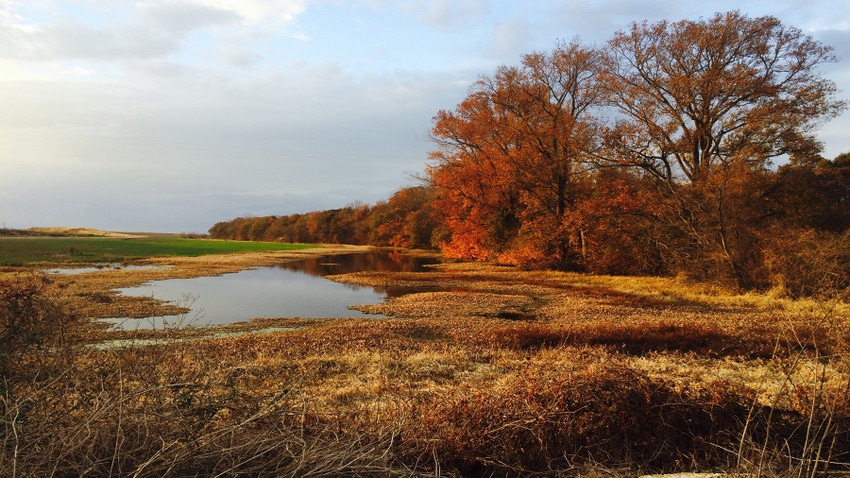
“I didn’t learn this in school.”
The ever-evolving framework of ag technology provides near-limitless resources for farmers looking to improve their efficiency and production down to a finite level – that is, if they can figure out how to work the darn stuff. And, even for students of the land educated beyond the school of hard knocks a father or father figure could provide, the pool of resources is just deep and dark enough to sink rather than swim.
Self-proclaimed “tech nerd” and Louisiana farmer Mead Hardwick of Hardwick Planting Co. has integrated a series of up-and-coming technologies on-farm over the years, starting with a family foundation.
“Our dad actually really started using the technology in the 90s when things were really starting to come about in terms of getting yield monitors and more precise control,” Hardwick said. “Just trying to be more efficient and saving money, which is kind of the foundation of why we try to use certain technologies today.”
Initially, Hardwick said the farm began using precision spraying and planting equipment to try to maximize production and target the most efficient uses of their inputs. Today, the family’s precision tool usage has expanded with more sophisticated technologies, but not without a lot of trial and error along the way.
“We didn't decide we had to get into precision ag. The foundation of exploring opportunities and technology was already there,” Hardwick said. “We didn't really invent that, but now we've taken it to its next level of where it is today.”
How they do it
The way producers use precision agriculture tools is as unique as the challenges each operation faces. For the Hardwick family, the basis of their precision agriculture use begins with the technologies already built into their equipment - in this case the John Deere Operations Center.
“All of our equipment is wireless and it all flows into the ops center,” Hardwick said. “From basic yield analysis to strip trials and looking at performance of machines. It's got a lot of great metrics on analyzing the use of your machines.”
The John Deere Operations Center allows Hardwick to analyze the precision data he obtains from other sources with more information about machine-driven performance, yield data and hours records. Additionally, it enables him to deliver prescriptions to employees at more distant portions on the farm and provide tech support while on the go.
Two other applications - MapShots and T3RRA - make up the rest of the farm’s layers of precision technology usage.
“We bought the T3RRA software system because we wanted to be able to do precision drains and resurface fields that had been resurfaced years ago that may have had some settling,” Hardwick said. “It's really handy because you can bring in Deere elevation layers right out of the Operations Center.”
One big change taking advantage of the T3RRA software has brought for Hardwick Planting Co. is removing their dependence on outside contractors for land leveling. Being able to DIY their fields on their own time schedule and without paying a premium, saves money and headaches in the long term.
MapShots, the company the Hardwicks used for NDVI images of their farm fields, was recently bought out by FieldAlytics. Hardwick Planting Co. typically subscribes to field views for the season and would receive images of their field progress every few days.
When it came time to top dress fields, the Hardwicks would use the most recent images to format a prescription for a precision application and then make a variable rate pass based on the up-to-date images.
“You definitely didn't get something usable every three days. We’ve got a lot of clouds in Louisiana and so you may get half the field one day and half the field the next but usually about every seven to 10 days you definitely got an image that was absolutely usable,” Hardwick said. “If you knew you were going to want to make a variable rate application in the next two weeks you really wanted to be looking pretty hard for a good image.
Same technologies, different applications
Hardwick Planting Co, grows a variety of different cash crops in any given season. How the family and farm employees utilize the technology available to them has to be just as diverse as the crops themselves.
“For example, corn right now represents the best opportunity on our farm for variable rate seating,” Hardwick said. “When you when you delineate zones, we do a field average zone and then we have zones that are high yielding.”
While corn lends itself to benefitting from a variable rate seeding strategy, Hardwick said the same isn’t necessarily true for cotton or soybeans. However, the same technology that allows for precision seeding in corn, can have other applications in different cropping scenarios. "In soybeans, we’re to trying to create a map to variable rate when we desiccate soybeans,” Hardwick said. “We've thought about using the same types of NDVI images to variable rate our application to exclude parts of the fields that are drying down just fine on their own.”
Creating confidence
Above engaging in efficiency and testing out new tech, the Hardwick family’s hope for their journey into precision ag was originally to understand the nitty gritty details of farming their land better, from the soil up.
“We wanted to gain knowledge to make sure that we're doing the right thing and that has given us a world of confidence to now outsource,” Hardwick said. “Our ag retailer has a person that they've hired that is running FieldAlytics for us, but we also have access to it and so we can be in there with knowledge of how the software and agronomy works to make sure we agree with all the prescriptions.”
Top 4 tech takeaways
Start Small
“All the modern equipment we have comes loaded with lots of capabilities that lots of us don't even really use, so one step is just trying to maximize that.”
Hardwick recommended the Climate FieldView platform as a good place to start for producers looking to analyze more of their on-farm data. Climate FieldView works with multiple equipment manufacturers and is more hardware based, so it can be used across a diverse array of equipment makes and models.
2.Tech Takes Time
While precision ag technology is targeted toward making producers more efficient and saving money in the long term, Hardwick said jumping in to top technologies inherently requires a time commitment.
“It's pretty challenging. We've created a lot more work,” Hardwick said. “If you don't care about any of this technology, then you don't have to worry about it but you also can be missing out on some opportunities as well.”
3.Personalize the Process
Retaining a personal interest in the applications and the results they track on-farm can be critical to using technology efficiently.
“I did just devote the time to do it in the early stages,” Hardwick said. “I would spend hours at night after all the normal work is done trying to just learn the software. But I was interested in how everything worked and how it could be used on our farm specifically.”
4. Connectivity is Key
Even in incredibly rural areas, quality internet connectivity is key to utilizing any type of modern ag technology.
“We could not farm the way that we farm without the internet. At night, after I put my kids to bed. I would sit and write prescriptions and I would send them to the machines that night so that when my operators got there at seven in the morning to plant the files were already in the tractor. I didn't I can't do that if I've got to put them on a thumb drive and drive them 80 miles.”
About the Author(s)
You May Also Like






